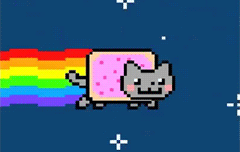In the world of digital communication, GIFs have quickly become one of the most popular forms of visual content. These short and snappy animated images are everywhere, from social media feeds to messaging apps. But what is it about GIFs that makes them so memorable and shareable?
In this article, we’ll unpack the most shared and memorable GIFs and explore what makes them so effective. From humor to emotion, we’ll delve into the psychology behind why certain GIFs take off while others fall flat. Whether you’re looking to create your own viral GIF or simply want to understand the power of this digital phenomenon, this article is for you. Let’s dive in and discover the art of GIF storytelling.
The History of GIFs
GIFs (Graphics Interchange Format) were first introduced by CompuServe in 1987 as a means of exchanging images between computers using slow internet connections. The initial version of GIFs supported a limited color palette of 256 colors and was mainly used for simple graphics such as logos, icons, and clip art.
In 1989, CompuServe introduced the GIF89a format, which allowed for animation by sequencing multiple still images together. This was a breakthrough for internet users, who could now create short, looping animations to convey humor, emotion, and information.
As the popularity of the internet grew, so did the popularity of GIFs. They became a staple of early internet culture, appearing on personal web pages, message boards, and email signatures. They were often used to create crude, low-resolution animations, and memes.
In the early 2000s, the rise of broadband internet and social media platforms such as MySpace and Facebook gave rise to a new generation of GIF creators. They started to use higher-quality images, more complex animations, and more sophisticated software to create GIFs.
Today, GIFs are a ubiquitous part of internet culture. They are used to express emotions, reactions, and opinions in a way that is concise, humorous, and often irreverent. Social media platforms like Twitter, Instagram, and Facebook have integrated GIFs into their platforms, making it easier than ever for users to find and share them.
The development of technology has also led to the creation of new formats such as APNG and WebP, which offer better compression and quality than GIFs. However, GIFs remain popular due to their ease of use, cross-platform compatibility, and unique visual style.
Memorable GIFs and Their Impact on Pop Culture
Over the years, there have been countless memorable GIFs that have captured the world’s attention. From the famous “Charlie Bit My Finger” clip to the “Distracted Boyfriend” meme, these snippets of animation have become cultural touchstones that we return to again and again.
- One of the reasons why these GIFs have been so successful is their ability to tap into universal themes and emotions. Whether it’s the joy of childhood innocence or the frustrations of modern relationships, these GIFs speak to something that we can all relate to.
- Another factor that makes these GIFs so memorable is their simplicity. They often feature just a few frames of animation, yet they’re able to convey a complex story or emotion. This simplicity also makes them easy to share and remix, which can help to further spread their popularity.
- Finally, these memorable GIFs often become part of larger cultural conversations. They become a way to comment on current events or to express a shared experience. In this way, they become more than just a piece of animation – they become a part of our collective consciousness.
13 Most Popular GIFs of All Time
Let’s take a look at the most popular GIFs of all time and explore their history and description.
-
Dancing Baby
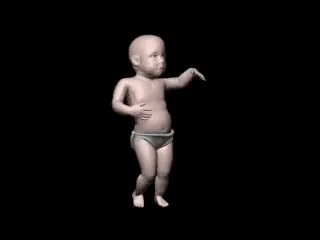
The Dancing Baby, also known as Baby Cha-Cha, was one of the first viral videos on the internet. Created by a team of animators at Autodesk in 1996, the Dancing Baby quickly became an internet sensation. The GIF features a 3D model of a baby dancing to a looped animation of the song “Hooked on a Feeling” by Blue Swede.
-
Nyan Cat
Nyan Cat is a popular internet meme that first appeared in 2011. The GIF features a pixelated cat with a Pop-Tart for a body flying through space with a rainbow trailing behind it. The original video, created by artist Chris Torres, has been viewed over 180 million times on YouTube.
-
Keyboard Cat

Keyboard Cat is another internet meme that has been around for over a decade. The original video, which features a cat playing a keyboard, was created in 1984 by Charlie Schmidt. The video resurfaced on the internet in 2007 and quickly became a viral sensation. The GIF features a looped animation of the cat playing the keyboard.
-
Deal With It

The Deal With It GIF features a pair of sunglasses dropping onto a person’s face accompanied by the text “deal with it”. The origin of the GIF is unclear, but it became popular on the internet in the early 2010s. The GIF is often used as a reaction to a situation where someone needs to “deal with it”.
-
Michael Jackson Eating Popcorn

The Michael Jackson Eating Popcorn GIF features a looped animation of Michael Jackson eating popcorn while watching a performance. The origin of the GIF is unknown, but it has been around since at least the early 2000s. The GIF is often used as a reaction to a situation where someone is watching something unfold.
-
Peanut Butter Jelly Time
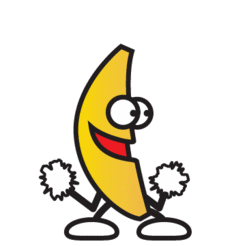
Peanut Butter Jelly Time is a popular internet meme that originated in 2002. The GIF features a dancing banana wearing sunglasses and a white suit. The banana dances to a looped animation of the song “Peanut Butter Jelly Time” by the Buckwheat Boyz. The original video has been viewed over 20 million times on YouTube.
-
WTF Cat
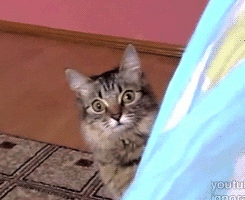
The WTF Cat GIF features a cat with a shocked expression and the text “WTF” overlaid on the image. The origin of the GIF is unclear, but it has been around since at least the early 2010s. The GIF is often used as a reaction to a situation that is surprising or unexpected.
-
Homer Simpson Bushes
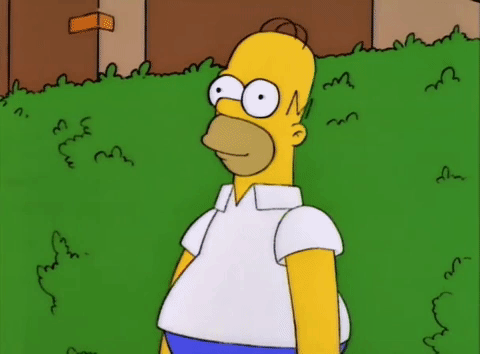
The Homer Simpson Bushes GIF features a looped animation of Homer Simpson disappearing into a bush. The origin of GIF is from the television show The Simpsons and has been used as a reaction to situations where someone wants to avoid a situation or hide from something.
-
Drake Hotline Bling
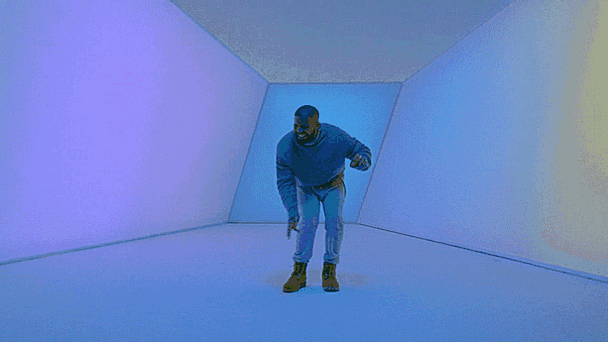
The Drake Hotline Bling GIF features rapper Drake doing a dance from his music video for the song “Hotline Bling”. The GIF became popular in 2015 and has been used to represent someone dancing or celebrating.
-
Crying Michael Jordan
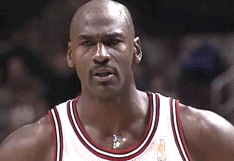
The Crying Michael Jordan GIF features a looped animation of basketball legend Michael Jordan crying during his 2009 Hall of Fame induction speech. The GIF has been used to represent sadness, disappointment, or defeat.
-
Doge

Doge is a popular internet meme that originated in 2013. The meme features a Shiba Inu dog with broken English captions that express the dog’s thoughts and feelings. The Doge GIF has been used to represent humor, sarcasm, and irony.
-
Cat Playing the Piano
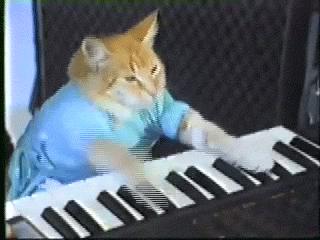
The Cat Playing the Piano GIF features a looped animation of a cat playing the piano. The origin of the GIF is unknown, but it has been around since at least the early 2000s. The GIF is often used as a reaction to something that is cute or funny.
-
This is Fine
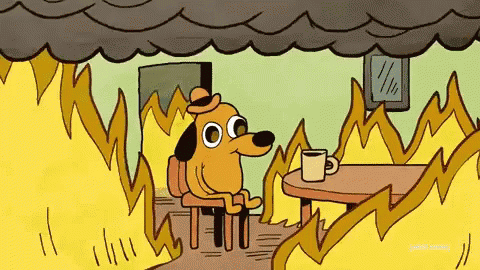
The This is Fine GIF features a looped animation of a dog sitting in a room that is on fire. The origin of GIF is from a comic by artist KC Green. The comic has been used as a metaphor for situations where someone is in a difficult or stressful situation but is trying to maintain a positive attitude.
Tips for Creating and Sharing Viral GIFs
If you’re looking to create your own viral GIF, there are a few things to keep in mind. Here are some tips:
- Focus on emotion: The most effective GIFs are those that tap into a universal emotion or experience. Try to create something that people can relate to on a personal level.
- Keep it simple: Remember that a GIF is just a few frames of animation. Don’t try to pack too much into it, or it may become overwhelming for the viewer.
- Stay relevant: Try to create a GIF that taps into a larger cultural conversation or trend. This will help to make it more shareable and increase its chances of going viral.
- Share it strategically: Once you’ve created your GIF, share it on social media and other platforms where your target audience is likely to see it. Use hashtags and other tools to help it gain traction.
Tools for Creating and Sharing GIFs
Creating and sharing GIFs has never been easier, thanks to a range of online tools and platforms. Here are a few options to consider:
- Giphy: This popular platform allows you to search for and share millions of GIFs, as well as create your own using their GIF maker tool.
- Imgur: This image hosting site also allows you to create and share GIFs, as well as discover trending content.
- Adobe Photoshop: If you’re looking to create more complex and polished GIFs, Photoshop offers a range of advanced animation tools.
Conclusion
GIFs have become an integral part of our digital communication, offering a way to express ourselves in a more dynamic and engaging way. By tapping into universal emotions and cultural conversations, these short animations have the power to go viral and become cultural touchstones. Whether you’re looking to create your own viral GIF or simply want to understand the power of this digital phenomenon, it’s clear that GIFs are here to stay.

